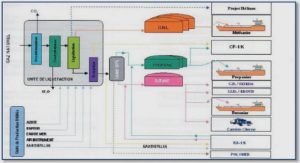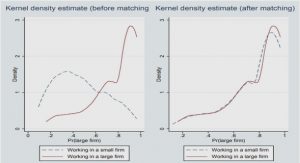Get Complete Project Material File(s) Now! »
MATERIALS AND METHODS
Bacterial strains and growth conditions
subtilis strains and plasmids used in this study are listed in Table 1 and Table 2. All B. subtilis strains were derived from PS832 and all E. coli strains were derived from JM109. Transformations of plasmid or chromosomal DNA into B. subtilis were done as described previously (1). E. coli strains were incubated in 2xYT medium (49) containing ampicillin (50 μg/ml). B. subtilis vegetative growth was at 37°C in 2xSG medium (37) containing appropriate antibiotics: chloramphenicol (3 μg/ml), spectinomycin (100 μg/ml), kanamycin (10 μg/ml), tetracycline (10 μg/ml), erythromycin (0.5 μg/ml) plus lincomycin (12.5 μg/ml). B. subtilis transformants were selected on 2xSG agar plates with appropriate antibiotics, 1% starch was added to plates to detect amylase activity. For xylose inducible promoter expression, 0.4% xylose was added to the medium
Plasmid and strain construction
For pbpAS-pbpBNPC mutant construction, primers pbpAupPacI and pbpASBN were used to amplify the 140 bp pbpA S domain region from pDPV263 with the 21bp pbpB N domain sequence at the 3’ end of the pbpA gene. This PCR product (ASBN) and primer pbpB2FLAGBamHI were then used to PCR amplify a 2.2kb fragment containing the pbpA S domain and the pbpB NPC domains from pbpB gene in pDPV274. A FLAG tag was added to the 3’ end, and PacI and BamHI sites were added to the 5’ and 3’ end, respectively. The pbpAS-pbpBNPC fragment was then cloned into the pSWEET-bgaB vector (4) between the PacI and BamHI sites, generating plasmid pDPV357. pDPV357 was transformed into E. coli DPVE3 (JM109) and sequenced using primers pbpAupPacI, pbpBseq500rev, PbpBseq1320, pDPV274Rev, pbpB2FLAGBamHI to confirm that the PCR product had the correct sequence and no mutation. Different primers were used to construct pDPV359 (pbpASN-pbpBPC), pDPV358 (pbpBS-pbpANPC), and pDPV355 (pbpBSN-pbpAPC) using the same strategy.
Figure 2. Map of plasmid pSWEET-bgaB. Plasmid pSWEET-bgaB (4) replaces the amyE locus in the B. subtilis chromosome via double crossover recombination and provides chloramphenicol resistance (cat). The plasmid also has an E. coli replication origin and ampicillin resistance cassette (bla). The xylose regulated promoter (PxylA) allows control of an inserted gene’s expression by adding xylose to the medium. Six PBP domain switch alleles were cloned into pSWEET-bgaB between PacI and BamHI and then integrated into the B. subtilis chromosome.
To get pbpAS-pbpBN-pbpAPC, the pbpBSN-pbpAPC PCR product was used as template. ASBN PCR product and primer pbpA2FLAGBamHI were used as forward and reverse primers to amplify a 2kb fragment. The fragment was cloned into pSWEET-bgaB through PacI and BamHI sites, generating pDPV360. The insert into the plasmid was sequenced and confirmed to be correct. By using the same method, pDPV355 (pbpBS-pbpAN-pbpBPC) was obtained.
These plasmids were linearized by a restriction enzyme cut at an XhoI site in the pSWEET-bgaB vector. Linearized plasmids were transformed into the B. subtilis wild type strain, PS832, and the pbpA depletion strain, DPVB203. Transformants were selected on 2xSG plates containing chloramphenicol (PS832 transformants) or chloramphenicol and erythromycin plus lincomycin (DPVB203 transformants) to allow the plasmids to integrate into the chromosome at the amyE locus via double crossover. Transformants were verified by a starch hydrolysis assay.
From pDPV355, a 278 bp region internal to pbpB was cut out using SacII and SmaI and ligated into the pMUTIN4 vector, generating pDPV362. The plasmid was verified by sequencing and then transformed into DPVE2 (JM107, Rec+) to produce plasmid concatemers. pDPV362 concatemers were transformed each domain switch B. subtilis strain with selection for MLSR transformants on 2XSG plates containing 0.4% xylose
SDS-PAGE and western blotting analysis
Cells from 100 ml exponential-phase cultures (optical density at 600 nm [OD600] of ~1.0) grown in 2xSG medium were harvested by centrifugation (8,000 g, 10 min), washed with 25 ml of cold PBS buffer (137 mM NaCl, 2.7 mM KCl, 4.3 mM Na2HPO4, 1.4 mM KH2PO4, pH 7.3) with 1 mM beta-mercaptoethanol and Protease Inhibitor Cocktail Tablets (Roche), centrifuged (8,000 g, 10 min), resuspended in 2.5 ml of PBS buffer, and kept cold on ice. Cells were broken by sonication, the lysate was cleared by centrifugation (8,000 g for 10 min at 4°C). The supernatant was stored at -80°C and used for SDS-PAGE analysis.
For SDS-PAGE, 20 μl of crude supernatant protein were mixed with sodium dodecyl sulfate (SDS) sample buffer and boiled for 5 min, and proteins were separated by SDS–7.5% polyacrylamide gel electrophoresis (PAGE) at 200 v for 45 minutes. After electrophoresis the proteins were transferred to Hybond-P membrane in transfer buffer (3 g of Tris base/liter, 14.4 g of glycine/liter, 20% methanol [vol/vol]), and the membranes were subjected to immunoblotting as described in the manufacture’s instructions of the BM Chromogenic Western Blotting Kit (Roche). Blots were probed with anti-FLAG M2 monoclonal antibody (2mg/ml) (Stratagene) and alkaline phosphatase labeled anti-mouse IgG/anti-rabbit IgG (Roche). Alkaline phosphatase substrate solution (NBT/X-phosphate solution) (Roche) was used for chromogenic detection
PBP detection
subtilis cells were incubated in 2xYT medium at 37°C until the OD600 reached 0.5. Cells were harvested by centrifugation and resuspended in 1 ml of cold 50 mM Tris-HCl (pH 7.5), 1 mM MgCl2, 1 M KCl, 0.1 mM PMSF, and centrifuged again. The cell pellets were resuspended in 1 ml of buffer A (100 mM Tris-HCl (pH 8.0), 1 mM MgCl2, 1 mM β-mercaptoethanol, 0.1 mM PMSF). The cells were broken by sonication and the cell suspensions were centrifuged at 13,000 g for 10 min to remove large debris. Supernatant was centrifuged at 48,000 g for 1 hour at 4°C and the pellet was resuspended in 50 μl of buffer B (50 mM Tris-HCl (pH 8.0), 1 mM β-mercaptoethanol, 0.1 mM PMSF). The protein concentrations of membrane samples were determined by Lowry assay (39). PBPs were detected using Bocillin (FL penicillin, Invitrogen). 50 μg of membrane proteins was incubated with 25 mM Bocillin in a total volume of 20 ml for 30 min at 37 °C. Proteins were separated by 7.5% SDS-PAGE. PBPs were detected using a Typhoon imager scanner (GE Healthcare) with excitation at 532 nm and emission at 526 nm
Cell preparation for immunofluorescence microscopy
Cell fixation, permeabilization, and staining were carried out as previously described (46). B. subtilis cultures were grown in 2xYT at 37 °C until an OD600 ~0.5. 0.5 ml of culture were harvested and pelleted by centrifugation at 4000 g for 1 min and resuspended in 1.5 ml fixation buffer containing 4.4% (wt/vol) paraformaldehyde and 28 mM NaPO4 pH7.2 at 37 °C for 30 min. Cells were then washed three times with PBS and resuspended in 100 μl GTE buffer (50 mM glucose, 20 mM Tris-HCl pH 7.5, 10 mM EDTA) and digested with 0.2 mg/ml lysozyme at room temperature for 5 min. After washing twice with PBS buffer, cells were resuspended in 100 μl PBS, and applied to poly-lysine coated slides at room temperature for 30 min. Then slides were washed with PBS twice, blocked with 4% (wt/vol) BSA in PBS and incubated for 30 min at room temperature. Slides were incubated with 0.625 μg/ml anti-FLAG antibody (Stratagene) in 0.2% BSA for 1 hour at room temperature. After washing 3 times with PBS, slides were incubated with 5 μg/ml diluted biotinylated goat anti-mouse IgG (Invitrogen) in 0.2% BSA for 1 hour at room temperature. After washing three times with PBS, slides were incubated with 0.5 μg/ml Cy3-streptavidin (Jackson ImmunoResearch Lab), and 1 μg/ml of DAPI dye for 1 hour at room temperature. Slides were then washed three times with PBS, and mounted with Gold anti-fade reagent (Invitrogen). Cells were visualized using Delta Vision Core and personalDV Microscopy System with an Olympus IX71 microscope. The exposure time is 800 ms for DAPI, and 500 ms for Cy3
REVIEW OF LITERATURE
Cell wall structure
Peptidoglycan synthesis
Penicillin-binding proteins
Proteins involved in bacterial cell elongation and division
Phenotypic effects of PBP mutants.
MATERIALS AND METHODS
Bacterial strains and growth conditions
Plasmid and strain construction
SDS-PAGE and western blotting analysis
PBP detection
Cell preparation for immunofluorescence microscopy
RESULTS
PBP2a and PBP2b domain interfaces determination.
Construction and verification of domain switch mutants..
Phenotypes of PBP2a-FLAG and PBP2b-FLAG control strains..
Expression of PBP2a/PBP2b variants.
Complementation studies of PBP2a/PBP2b variants.
Localization of PBP2a/PBP2b variants.
DISCUSSION
REFERENCES
GET THE COMPLETE PROJECT






